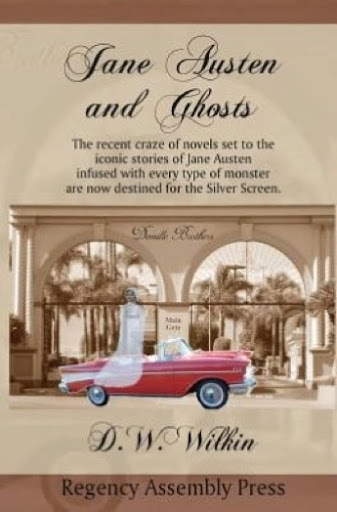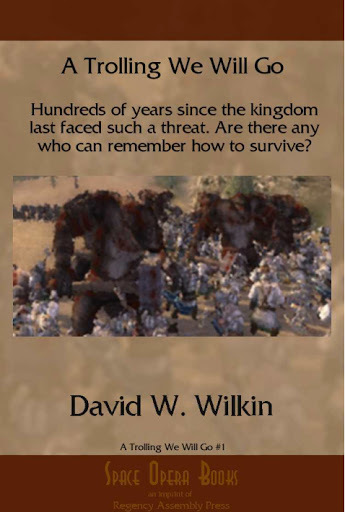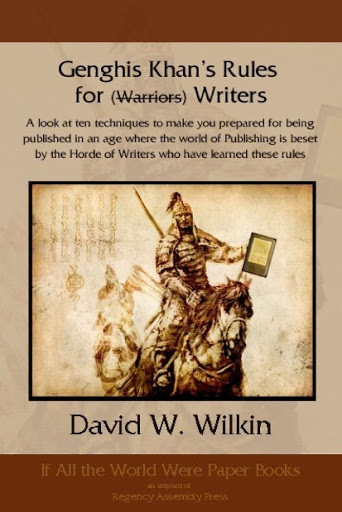D.W. Wilkin's Blog, page 59
April 25, 2016
RAP has The Shattered Mirror, A Regency Romance
The Shattered Mirror
For your enjoyment, one of the Regency Romances I published. It is available for sale and now at a reduced price of $3.99, and I hope that you will take the opportunity to order your copy.
Order for yourself or as a gift. It is now available in a variety of formats. For just a few dollars this Regency Romance can be yours for your eReaders or physically in Trade Paperback.
Barnes and Noble for your Nook
and in Trade Paperback
Bridget Halifax-Stokes was giddy with the excitement of her Season in London. Town had beckoned and her Season came on the heels of the end of the war against the tyrant. All the handsome men were returning heroes. What better year to come out?
Her father thought it all nonsense. Her mother believed that it would be the best showing of any of her daughters. More lords now available and the family’s luck that Bridget was just the perfect age.
All is fun and frivolity for Bridget until she literally crashes into Sir Patrick Hampton as he limps along the High Street. A man she knew once well from her childhood, now a stranger with dark and foreboding eyes. Eyes that had seen more than any man’s share of the war.
Feedback
If you have any commentary, thoughts, ideas about the book (especially if you buy it, read it and like it
April 24, 2016
Regency Personalities Series-George Bingham 3rd Earl of Lucan
Regency Personalities Series
In my attempts to provide us with the details of the Regency, today I continue with one of the many period notables.
Field Marshall George Charles Bingham 3rd Earl of Lucan
16 April 1800 – 10 November 1888
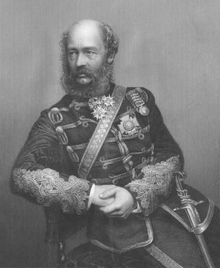
George Bingham
Field Marshall George Charles Bingham 3rd Earl of Lucan was the first son of Richard Bingham, 2nd Earl of Lucan, an Anglo-Irish peer, and Elizabeth Bingham (née Belasyse), Lord Bingham (as he was styled up until late June 1839) attended Westminster School but left formal education to be commissioned as an ensign in the 6th Regiment of Foot on 29 August 1816. He transferred to the 11th Light Dragoons on 24 December 1818.
Lord Bingham became a lieutenant in the 8th Regiment of Foot on 20 January 1820, a captain in the 74th Regiment of Foot on 16 May 1822 and was promoted to major, unattached, on 23 June 1825. He transferred to the 17th Lancers on 1 December 1825 and became commanding officer of the regiment with the rank of lieutenant colonel on 9 November 1826; he lavished such expense on his officers’ uniforms and horses that the officers became known as “Bingham’s Dandies.” He was also elected as MP for County Mayo in 1826 and held that seat until 1830. During the Russo-Turkish War, which began in 1828, he acted observer with the Imperial Russian Army.
Lord Bingham succeeded his father as 3rd Earl of Lucan in the Peerage of Ireland on 30 June 1839 and, having become an Irish Representative Peer in June 1840 and having been promoted to colonel on 23 November 1841, he became Lord Lieutenant of Mayo in 1845. During the Great Famine in the late 1840s he acted in a sufficiently clumsy and insensitive manner, by introducing mass evictions from villages such as Ballinrobe, that he earned the hatred of many of the local people and became known as “The Exterminator”. He was promoted to major general on 11 November 1851.
At the outbreak of the Crimean War Lord Lucan applied for a post and was made commander of the Cavalry Division. His brother-in-law, the 7th Earl of Cardigan, was one of his subordinates, commanding the Light Brigade – an unfortunate choice as the two men heartily detested each other. Promoted to brevet lieutenant general on 18 August 1854, he was present at the Battle of Alma in September 1854 but, on the orders of the Army commander, Lord Raglan, he held his division in reserve. At the Battle of Balaclava in October 1854, Lucan received an order from Raglan and in turn ordered Cardigan to lead the fateful Charge of the Light Brigade leading to some 278 British casualties. As Lucan brought the Heavy Brigade forward in support he was lightly wounded in the leg. Raglan blamed Lucan for the loss, “you have lost the light brigade”, and censured him in despatches. Although Lucan complained against this censure, as the relationship between the army commander and the cavalry commander had clearly broken down, he was recalled to England, where he returned at the beginning of March 1855.
On his arrival Lucan’s demand for a court-martial was declined and instead he defended himself with a speech to the House of Lords on 19 March 1855, blaming Raglan and his deceased aide-de-camp, Captain Louis Nolan. This tactic appears to have been successful as he was subsequently appointed Knight Commander of the Order of the Bath on 5 July 1855, and Colonel of the 8th Light Dragoons, who had charged with the Light Brigade, on 17 November 1855.
A significant contribution was made by Lucan to Parliament when he produced a solution to the problem of admitting Jews to Parliament. Prior to this, distinguished Jews had declined to take the oath “on the true faith of a Christian” and having not been sworn in as required by statute, were refused voting rights although having been elected an MP. Lucan proposed, by way of a compromise, that each House could decide and modify its own oath. The House of Lords, who had long opposed the admission of Jews, agreed to this. A prominent Jew, Lionel Nathan Rothschild, was thus allowed to enter the House of Commons and was sworn in on 26 July 1858.
Although Lucan never again saw active duty he was promoted to lieutenant general on 24 December 1858, and, having become colonel of the 1st Regiment of Life Guards on 27 February 1865, he was to promoted to general on 28 August 1865 and advanced to Knight Grand Cross of the Order of the Bath in 1869. He formally retired in October 1877, but after some lobbying he was promoted to field marshal on 21 June 1887. He died at 13 South Street, Park Lane, London, on 10 November 1888 and was buried at Laleham in Middlesex.
In 1829 Bingham married Lady Anne Brudenell, seventh daughter of the 6th Earl of Cardigan; they had six children.


RAP (Regency Assembly Press) in need of Beta-Readers
Regency Assembly
Press
is looking for
Beta Readers
Two novels are ready for Beta Reading
The first is a continuation of Pride and Prejudice with Ms Caroline Bingley and her fortune at stake:
Do we think that Mr Hurst married his Bingley Bride without incentive? It is highly probable that Caroline Bingley, even though she has a sharp, acerbic tongue, still is in possession of a fortune and an astute fortune hunter who deciphers this may soon be on the road to, if not a happy marriage, one with financial security.
The second a more traditional Regency romance, entitled You Ought to Trust Your Mother:
A young girl/woman of great beauty realizing that men do not see her other qualities until she meets a lord who she really thinks misses her essence. The truth is he sees her better than any other and our heroine’s mother believes him to be an excellent match. What young girl wants to trust her mother in such things.
Please respond or send an email if you are interested


Trolling Down to Old Mah Wee, another Fantasy
Trolling Down to Old Mah Wee
Not only do I write Regency and Romance, but I also have delved into Fantasy.
The Trolling series, (the first three are in print) is the story of a man, Humphrey. We meet him as he has left youth and become a man with a man’s responsibilities. We follow him in a series of stories that encompass the stages of life.
We see him when he starts his family, when he has older sons and the father son dynamic is tested. We see him when his children begin to marry and have children, and at the end of his life when those he has loved, and those who were his friends proceed him over the threshold into death.
All this while he serves a kingdom troubled by monsters. Troubles that he and his friends will learn to deal with and rectify. It is now available in a variety of formats.
For $2.99 you can get this 2nd book in the fantasy adventure series of Humphrey and Gwendolyn.
Barnes and Noble for your Nook
When the neighboring kingdom of Mah Wee begins to experience the same problems that beset Torahn some years before, they urgently request the aid of the experts in containing a new Troll infestation. But eradicating Trolls is not as easy as exterminating a few rats or mice.
Trolls are bigger than men, they are stronger than men, and then are meaner than men. Humphrey Cutter and his band of mismatched warriors must once again rise to the occasion, but can they without the aid of expertise of Gwendolyn and her particular skills?
Mah Wee, an ancient kingdom, with a monarch more steeped in the rights of being a king rather than the obligations and duties that a king should be. Here Humphrey and his crew finds that they have more than Trolls to overcome if they are to save Mah Wee from the same or nearly similar problems that they faced before in Torahn.
But, as Humphrey knows, nothing can truly be accomplished if the lovely Gwendolyn is not able to lend her aid as well.
Feedback
If you have any commentary, thoughts, ideas about the book (especially if you buy it, read it and like it
April 23, 2016
Regency Personalities Series-Thomas Powys 3rd Baron Lilford
Regency Personalities Series
In my attempts to provide us with the details of the Regency, today I continue with one of the many period notables.
Thomas Atherton Powys 3rd Baron Lilford
2 December 1801 – 15 March 1861
Thomas Powys 3rd Baron Lilford was the son of Thomas Powys, 2nd Baron Lilford, and Henrietta Maria Atherton of Atherton Hall. He succeeded his father as third Baron Lilford in 1825. In 1837 he was appointed a Lord-in-Waiting (government whip in the House of Lords) in the Whig administration of Lord Melbourne, a post he held until the government fell in August 1841. He never returned to office.
Lord Lilford married the Hon. Mary Elizabeth Fox, daughter of Henry Vassall-Fox, 3rd Baron Holland, and Lady Holland, in 1830, and had ten children. He inherited Lilford Hall in Northamptonshire from his father in 1825. In 1860, he inherited Bank Hall in Bretherton, Lancashire, on the death of his brother-in-law George Anthony Legh Keck. A year after inheriting he died in March 1861, aged 59, and was succeeded by his eldest son Thomas, a prominent ornithologist. Lady Lilford died in 1891.


Jane Austen Fans Rejoice, Jane is BACKKKK… Jane Austen and Ghosts
Special Sale Price!
Jane Austen and Ghosts.
Not only do I write Regency and Romance, but this can take a humorous turn. Some years back, I am sure readers of this blog will be aware that some writers began to take great liberty with Jane Austen and her works. Pride and Prejudice being liberally rewritten with the inclusion of zombies.
Then other books appeared with sea monsters, and werewolves and vampires. President Lincoln has even made it to the big screen where he is intent on sending foul creatures to hell. It occurred to me, even before I read any of this literature, that Jane would probably not appreciate what had been done to her classic piece.
That the tales and her life have become visual spectacles that we enjoy she might not like either, but is perhaps resigned to. That zombies, ghosts and vampires are now used to follow her own plot lines would I think, have her turning over in her grave. Jane Austen and Ghosts is my take on that.
It is now available in a variety of formats. For a limited time it has been reduced to $2.99 for your eReaders and $8.99 for paperback you can get this Jane Austen adventure.
Barnes and Noble for your Nook
and in Paperback
In the world of moviemaking, nothing is as golden as rebooting a classic tale that has made fortunes every time before when it has been adapted for the silver screen.
Certainly any work by Jane Austen made into a movie will not only be bankable, but also considered a work of art. That is of course until the current wave of adaptations that unite her classic stories with all the elements of the afterlife is attempted to be created.
That these have found success in the marketplace amongst booklovers may not be quite understood by those who make movies. But that they are a success is understood and a reason to make them into movies.
All that being said, perhaps it would also be fair to say that the very proper Jane, were she present to have anything to say about it, would not be pleased. Of course she has been away from this Earth for nearly 200 hundred years.
But does that mean were she upset enough, she wouldn’t come back?
Feedback
If you have any commentary, thoughts, ideas about the book (especially if you buy it, read it and like it
April 22, 2016
Regency Personalities Series-William Seguier
Regency Personalities Series
In my attempts to provide us with the details of the Regency, today I continue with one of the many period notables.
William Seguier
9 November 1772 – 5 November 1843
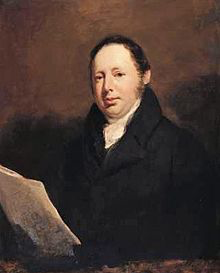
William Seguier
William Seguier was born in the parish of St Martin-in-the-Fields in London, the descendant of French Huguenot refugees.
Many of his relatives were involved in the arts on a professional level, from his father David, a picture dealer, to his uncle on the paternal side, the sculptor Peter Seguier.
Initially Seguier worked as an artist; he may have been taught by George Morland and perhaps even William Blake. However, his marriage to Anne Magdalene Clowden (a fellow Huguenot), gave him the independent means to establish a dealership, and he largely gave up painting thereafter. The business, in which his brother also worked, also offered picture-cleaning and restoring services, a useful way of getting to know collectors.
From 1806, when Lord Grosvenor consulted him on the purchase of the Agar collection, Seguier’s clientele became ever more aristocratic and well-connected, including such names as Sir George Beaumont, Sir Abraham Hume, Sir Robert Peel and the Duke of Wellington.
Beaumont and Grosvenor were also members of a group of connoisseurs and artists (including David Wilkie and Benjamin Haydon) that called itself “the clique”, to which Seguier was admitted. Through such connections as these, the opportunistic Seguier secured a number of high-ranking official positions, beginning in 1805 with his appointment as Superintendent of the newly formed British Institution. This was followed in 1820 with the post of Surveyor of the King’s Pictures, and upon the foundation of the National Gallery in 1824 he was appointed its Keeper.
The Superintendent was responsible for organizing and hanging the shows at the British Institution, a role that inevitably gave rise to grumbling and worse from artists – at the Royal Academy a committee was responsible for the hang, which allowed someone else to be blamed, but Seguier had no such opportunity to share the blame. In 1833 John Constable wrote with heavy irony of having received a visit in his studio from “a much greater man than the King—the Duke of Bedford—Lord Westminster—Lord Egremont, or the President of the Royal Academy — “MR SEGUIER”.” When in 1832 two pictures by Richard Parkes Bonington, who had been dead only four years, were included in an “Old Masters” exhibition, Constable (who was twenty-six years older than Bonington) wrote that Seguier was “carrying on a Humbugg”.
Seguier held these three positions until his death in 1843; his brother succeeded him at the British Institution. He is buried in Brompton Cemetery, London.


Space Opera Books Presents A Trolling We Will Go (Book #1)
A Trolling We Will Go
Not only do I write Regency and Romance, but I also have delved into Fantasy.
The Trolling series, (the first three are in print) is the story of a man, Humphrey. We meet him as he has left youth and become a man with a man’s responsibilities. We follow him in a series of stories that encompass the stages of life.
We see him when he starts his family, when he has older sons and the father son dynamic is tested. We see him when his children begin to marry and have children, and at the end of his life when those he has loved, and those who were his friends proceed him over the threshold into death.
All this while he serves a kingdom troubled by monsters. Troubles that he and his friends will learn to deal with and rectify.
It is now available in a variety of formats. For $.99 you can get this fantasy adventure.
Barnes and Noble for your Nook
The Valley Kingdom of Torahn had been at peace for fifty years since the Council of Twenty-One saw fit to dispense with their royal family.
The only Kingdom without a King on the west side of the continent. But late last year, something caused the Goblins in the Old Forest, Karasbahn to stir and act courageous.
Something that men can not remember seeing Goblins ever doing. What has gotten the Goblins in such a state?
Whatever it is, it can not be good news for Torahn. Or for Humphrey, a woodcutter for a small town, far from Karasbahn.
But part of the Kingdom’s militia, with no family or other exemptions. He is perfect to be sent to the Old Forest and find out what scares the Goblins that they have become fearless.
Feedback
If you have any commentary, thoughts, ideas about the book (especially if you buy it, read it and like it
April 21, 2016
Regency Personalities Series-Charles Finch 9th Earl of Winchilsea
Regency Personalities Series
In my attempts to provide us with the details of the Regency, today I continue with one of the many period notables.
Charles Finch 9th Earl of Winchilsea
4 November 1752 – 2 August 1826
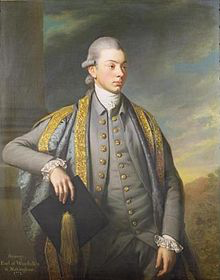
Charles Finch
Charles Finch 9th Earl of Winchilsea was the son of William Finch, who was in turn the second son, by his second marriage, of Daniel Finch, 2nd Earl of Nottingham (1647–1730), and Charlotte Fermor, daughter of Thomas Fermor, 1st Earl of Pomfret. His sister was Sophia Finch. His father died in 1766 and he inherited the Winchilsea title in 1769, from his childless Uncle, Daniel Finch, 8th Earl of Winchilsea and 3rd Earl of Nottingham. In the 1770s Finch was in Florence as appears as one the recognisable people on the right hand side of Johann Zoffany’s painting the Tribuna of the Uffizi.
Finch served with the 87th Foot at the time of the American Revolutionary War from its formation in 1779 to its disbanding in 1783, with the temporary rank of major and lieutenant-colonel.
Winchilsea, “who would go anywhere for a game of cricket”, is the winner of the title of Most Recorded Player of the 18th century, though he was far from the best. He has 128 recorded first-class appearances from 1785 to 1800, which just beats William Bullen (120) and William Beldham (117). This is remarkable given that Winchilsea was already 33 before he even played in a major match. Even so, Winchilsea on the field was something of a liability, despite using a bat that weighed 4 lb 2oz.
In about 1784, Winchilsea was one of the prime movers in the foundation of the White Conduit Club (WCC), so–called because it played on White Conduit Fields. WCC was ostensibly an exclusive club that “only gentlemen” might play for, but the club did employ professionals and one of these was the bowler Thomas Lord, a man who was recognised for his business acumen as well as his bowling ability.
It was in 1785 that WCC first appeared in a major match. However White Conduit Fields was an open area allowing members of the public, including the rowdier elements, to watch the matches and to voice their opinions on the play and the players. The White Conduit gentlemen were not amused by such interruptions and decided to look for a more private venue of their own.
Winchilsea and Colonel Charles Lennox commissioned Lord to find a new ground and offered him a guarantee against any losses he may suffer in the venture. So Lord took a lease from the Portman Estate on some land at Dorset Fields in Marylebone, where Dorset Square is now sited; the ground was prepared and opened in 1787. The first match was on Monday 21 May 1787 was between the White Conduit Club and Middlesex.
This was Lord’s first ground. It was originally called the New Ground but was soon renamed Lord’s Cricket Ground and, since it was in Marylebone, the WCC on relocating there decided to call themselves Marylebone Cricket Club. The Earl of Winchilsea was one of its early leading lights.
Lord Winchilsea never married. His illegitimate son George Finch was a politician.


Rules for better writing from Genghis Khan
The Rules for Writers
Those who follow me for a long time know that I also write in other fields aside from Regency Romance and the historical novels I do.
A little while ago, before the end of 2011 and the 2011 NaNoWriMo, (where I wrote the first draft of another Regency) I started work on a project about writing.
The premise was what one should think about when starting and working on a project. I came up with 10 rules to follow in a quest to become a writer and tackle that novel.
Here are The 10 Rules:
1) Read like a writer
2) Have a good story
3) Your work will be Thematic
4) Plot: The seven deadly ones
5) Characters will carry your tale, near and far
6) Words are your warriors
7) Stories are structured
8) All tales building to a Crescendo
9) Genghis edits history, shouldn’t you as well
10) Act like a writer
So it is now released. For $4.99 you can get this treatise on honing your skills.
Barnes and Noble for your Nook
Genghis Khan came from the Steppes of Mongolia, a family torn apart by neighboring tribes, to unite those tribes, or defeat them, and then conquer the greater part of the known world. His heirs would continue his conquest right to the edge of western society. The world feared the Mongols, and Genghis. Now, you can benefit, as a writer from the lessons he has to impart on how, with the changing world of publishing, you can perfect your work and write not only good material for this new age of book publishing. But can write great work for this new age. 10 simple lessons, and you will be on your way to conquering the bookshelves of the 21st century. This short book will have you learning all you really need to know to elevate your writing to the next level. These simple lessons will start you on the road to better writing as a member of the Horde in no time.
Feedback
If you have any commentary, thoughts, ideas about the book (especially if you buy it, read it and like it



